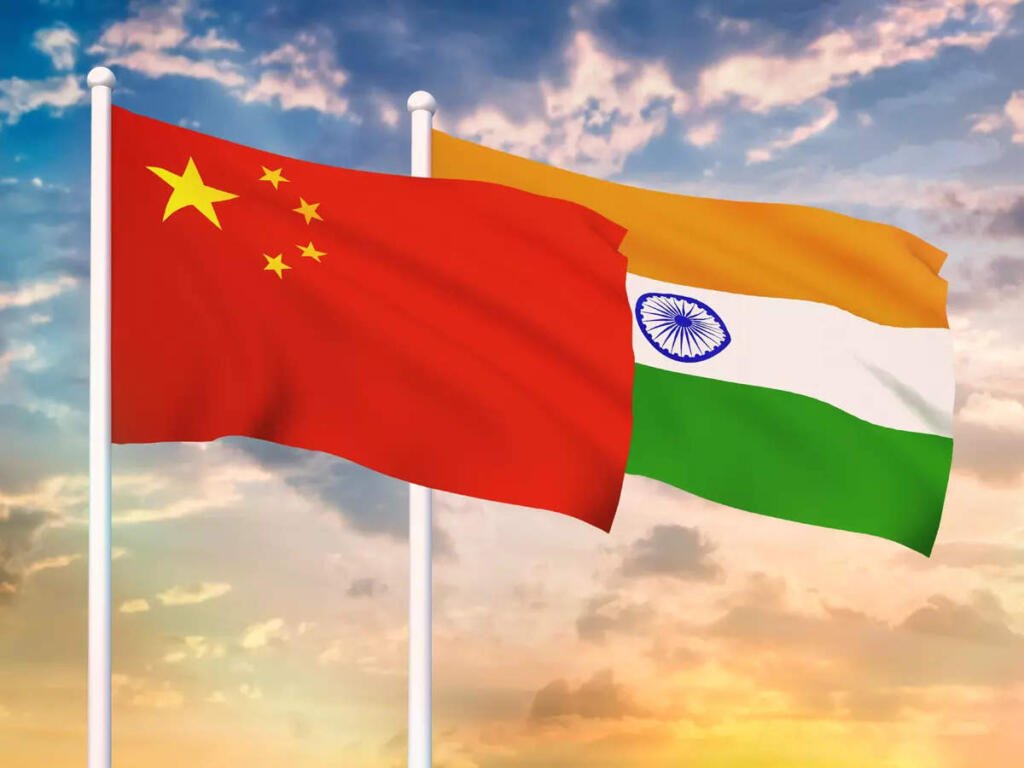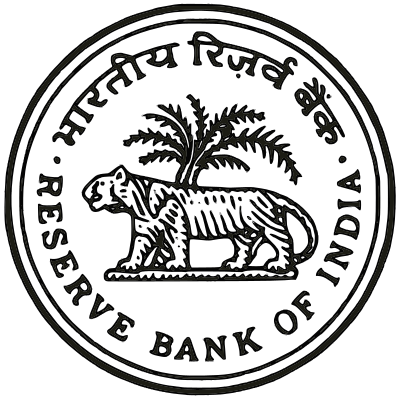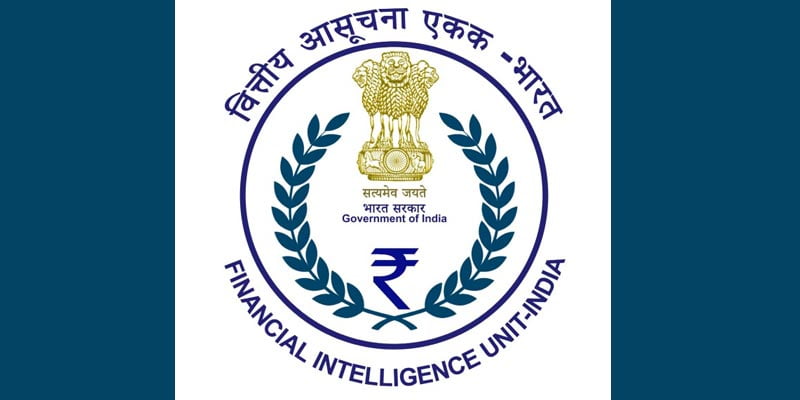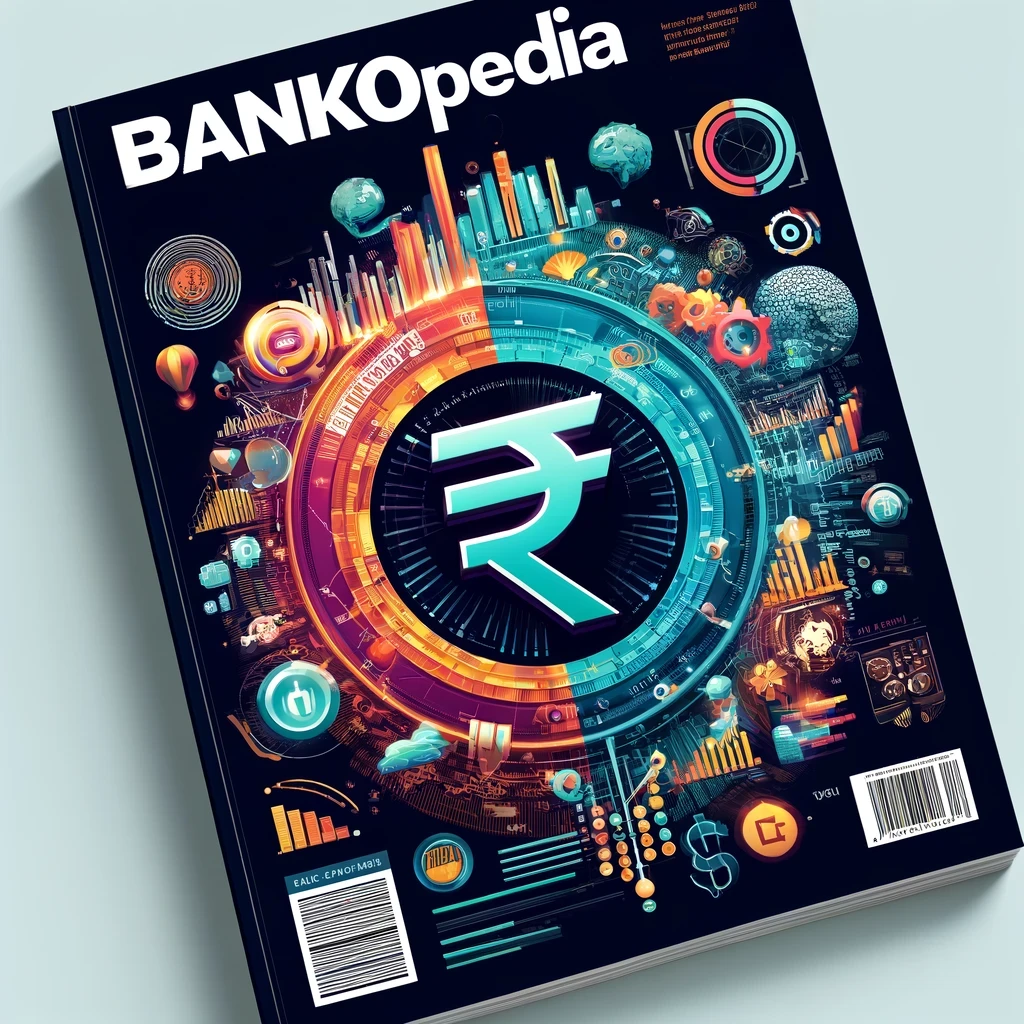Welcome to Daily Banking Digest, your premier source for the latest news and insights on April 29, 2024, focusing on banking, the economy, and finance. Our platform offers a comprehensive overview of the day’s most critical financial stories, market trends, and economic developments. Whether you’re a professional in the financial sector, an investor monitoring market movement, or someone interested in staying informed about the economic landscape, Daily Banking Digest provides reliable, up-to-date information.
Join our Telegram Channel for Daily PDF in your Inbox – Click Here
Table of Contents
SEBI Facilitates Transition for Research Analysts and Investment Advisors to New Regulatory Framework
SEBI has amended regulations to allow deemed enlistment of registered investment advisors and research analysts with recognized bodies. This move aims to simplify business operations and facilitate the implementation of the RAASB and IAASB frameworks. SEBI has also reduced application and registration fees for research analysts.

Key Points:
Deemed Enlistment: – SEBI allows deemed enlistment of existing registered investment advisors/research analysts with recognized bodies.
Ease of Doing Business: – The move is expected to simplify business operations and ensure smooth implementation of RAASB and IAASB frameworks.
Recognition of Stock Exchanges: – SEBI has approved a proposal to recognize stock exchanges as RAASB and IAASB.
Reduced Fees for Research Analysts: – Application fee for research analysts reduced to ₹2,000 for individuals and ₹20,000 for body corporates. – Registration fee for research analysts reduced to ₹3,000 for individuals and ₹30,000 for body corporates. – Extension fee for research analysts reduced to ₹1,000 for individuals and ₹5,000 for body corporates.
Effective Date: – The regulatory changes and new fee structure for research analysts will come into effect on the ninetieth day from April 26, 2024.
Competitive Market for Financial Advice: – Registered investment advisors face competition from banks, brokerage firms, online investment platforms, and discount brokers.
ICAI to Expand Presence with 9 New Centers of Excellence Across India
The Institute of Chartered Accountants of India (ICAI) has approved a policy document establishing Centres of Excellence (CoEs) to promote research, innovation, and learning within the accounting profession. The institute plans to open nine additional CoEs across India in the next three years, adding to the existing two in Hyderabad and Jaipur. The CoEs will serve as hubs for knowledge dissemination and talent cultivation. Additionally, ICAI has approved the establishment of a new branch in Tonk District, Rajasthan, and renamed the Aurangabad Branch to Chhatrapati Sambhajinagar Branch. The institute will also organize a “CA Run for Viksit Bharat” on June 30th to promote India’s development.

Key Points:
Centre of Excellence (CoE) – Approved policy document to foster research, innovation, and learning – Nine additional CoEs to be opened across India in three years – Vision, mission, goals, objectives, and governing structure outlined in policy document – Focus on research, teaching, training, and stakeholder dialogue
New Branch – New branch approved in Tonk District, Rajasthan – 176th branch in ICAI’s network
Branch Renaming – Aurangabad Branch renamed to Chhatrapati Sambhajinagar Branch
CA Run for Viksit Bharat – Mega run organized on June 30th – Theme: Viksit Bharat (Developed India) – Participation from all ICAI regions and branches
Government Considers Expanding Electronics Component Manufacturing Support Scheme
India aims to increase local value addition in electronics manufacturing from 18-20% to 38-40%. The government plans to identify and incentivize the production of five key electronic components, including PCBs, to establish a strong domestic manufacturing base. The focus is on areas where India can excel, rather than attempting to cover the entire value chain. Private sector involvement and inclusive growth are crucial for India’s participation in global value chains and the expansion of the digital economy.
Key Points
1. Local Value Addition Target – Increase local value addition in electronics manufacturing from 18-20% to 38-40%.
2. Electronic Components Promotion – Identify and incentivize the production of five key electronic components, including PCBs. – Learn from other countries’ experiences in promoting component manufacturing.
3. Resilience and Competitiveness – Doubling value addition to 38-40% to enhance resilience and competitiveness. – Focus on areas where India can make a difference, rather than covering the entire value chain.
4. Private Sector Involvement – Encourage private sector participation in electronics manufacturing. – Highlight the efforts of Indian groups like Tatas and Murugappa Group.
5. Inclusive Growth – Digital economy has the potential to deliver inclusive growth. – Allow for a range of participants to contribute to the digital economy.
6. Digital Economy Growth – Digital economy size increased from ₹13.6 lakh crore to ₹18.2 lakh crore from FY20 to FY22. – Employment in the digital sector increased from 4.9 million to 5.1 million during the same period. – India’s digital economy is expected to grow from 8 to 20% of the overall economy, reaching $1 trillion when the country reaches $5 trillion.
YES Bank’s Q4 Profit Soars by Over 100% to ₹452 Crore, Boosted by Margin Expansion Despite Rising Costs
YES Bank reported a significant increase in net profit for Q4 FY24, driven by improved margins and asset quality. However, higher operating costs impacted the bottom line. The bank witnessed growth in advances and deposits, with a focus on SME and mid-corporate lending. Management expects continued growth in these segments and estimates deposit and loan growth of 18.5% and 17%, respectively, in FY25.

Key Points
Net Profit: – Net profit of ₹452 crore, up 123.2% YoY and 95.2% QoQ.
Advances: – Net advances grew 12.1% YoY and 4.7% QoQ to ₹2.3 lakh crore. – Strong growth in SME and mid-corporate advances (25% YoY).
Deposits: – Deposits grew 22.5% YoY and 10.1% QoQ to ₹2.7 lakh crore. – CASA ratio improved to 30.9%.
Loan Growth: – Loan growth to be driven by SME and mid-segment loans (over 25% growth). – Retail and large corporate loans expected to grow in high single digits.
Net Interest Income (NII): – NII increased 2.3% YoY and 6.8% QoQ to ₹2,153 crore. – NIM stood at 2.4%, flat QoQ but lower than 2.8% YoY.
Asset Quality: – Gross NPA ratio improved to 1.7%. – Net NPA ratio at 0.6%.
Operating Costs: – Operating costs increased 27% YoY to ₹2,819 crore. – Costs related to PSLC purchases and variable employee wages contributed to the increase.
Management Outlook: – Deposit growth to exceed loan growth in FY25. – Margins expected to improve by 80-100 bps over 2-3 years.
ICICI Bank’s Q4 Profit Surges 17% Driven by Robust Loan Growth and Stable Asset Quality
ICICI Bank reported a 17.4% year-over-year and 4.2% quarter-over-quarter increase in profit after tax to ₹10,708 crore in Q4 FY24. This growth was driven by strong loan growth and controlled asset quality.

Key Points
Loan Growth – Total advances increased 16.2% y-o-y and 2.7% q-o-q to ₹11.8-lakh crore. – Retail loan portfolio grew 19.4% y-o-y and 3.7% q-o-q to ₹6.6-lakh crore. – Corporate loan growth was muted due to repayments by large PSU NBFCs. – Business banking loans, SME loans, rural portfolio, and domestic corporate loans all showed strong growth.
Asset Quality – Gross NPA ratio declined to 2.16% from 2.30% a year ago. – Net NPA ratio declined to 0.42% from 0.44% in the previous quarter.
Net Interest Income and Margin – Net interest income increased 8.1% y-o-y to ₹19,093 crore. – Net interest margin (NIM) was 4.40%, lower than 4.43% in the previous quarter and 4.90% a year ago. – The bank expects margins to remain range-bound in FY25.
Deposits – Deposits grew 19.6% y-o-y and 6% q-o-q to ₹14.1-lakh crore. – CASA deposits grew 10.1% to ₹5.9-lakh crore. – Term deposits were up 27.7% on year and 1.6% on quarter.
Other Metrics – The bank incurred a treasury loss of ₹281 crore in Q4 due to the transfer of negative balance in Foreign Currency Translation Reserve.
IDFC First Bank Reports 10% Decline in Standalone PAT to Rs 724 Crore in Q4
IDFC First Bank reported a 9.8% decline in net profit for Q4 FY24, primarily due to higher interest expenses. However, the bank witnessed strong growth in interest income, deposits, and loans and advances.

Key Points:
Net Profit: – Net profit declined by 9.8% to Rs 724.35 crore in Q4 FY24.
Interest Income: – Interest income increased by 28% to Rs 8,219.21 crore in Q4 FY24.
Interest Expenses: – Interest expenses rose by 32.63% to Rs 3,750.34 crore in Q4 FY24.
Deposits: – Total deposits grew by 38.7% to Rs 2,00,576 crore as of March 31, 2024. – Customer deposits increased by 41.6% to Rs 1,93,753 crore. – CASA deposits grew by 31.7% to Rs 94,768 crore.
Loans and Advances: – Loans and advances increased by 25.1% to Rs 2,00,965 crores as of March 31, 2024.
Other Key Takeaways: – Net Interest Income (NII) grew by 24% to Rs 4,469 crore in Q4 FY24. – Fee and other income increased by 36% to Rs 1,610 crore in Q4 FY24. – Operating expenses grew by 29% to Rs 4,447 crore in Q4 FY24. – Core PPOP grew by 22% to Rs 1,632 crore in Q4 FY24. – Provisions increased by 50% to Rs 722 crore in Q4 FY24. – Net profit grew by 21% to Rs 2,957 crore in FY24. – NII grew by 30% to Rs 16,451 crore in FY24. – Net Interest Margin (NIMs) increased from 6.05% to 6.36% in FY24.
Onion Exports Permitted to Bangladesh, UAE, Sri Lanka, and Others Despite Domestic Supply Concerns
The Indian government has authorized the export of 99,150 MT of onions to six countries: Bangladesh, UAE, Bhutan, Bahrain, Mauritius, and Sri Lanka. This decision is driven by lower crop estimates for 2023-24 and increased international demand. The National Cooperative Exports Limited (NCEL) will facilitate the export process, sourcing onions from domestic producers through an e-platform. Additionally, the government has permitted the export of 2000 MT of white onions, which have higher production costs. To ensure domestic stability, the government has set a procurement target of 5 lakh tons of onions under the Price Stabilization Fund (PSF) for the Rabi-2024 season.

Key Points:
Export Authorization: – 99,150 MT of onion exports allowed to six countries – NCEL designated as the export agency
Export Facilitation: – Onions sourced from domestic producers through an e-platform – 100% advance payment required
White Onion Export: – 2000 MT of white onion export permitted – Higher production costs due to seed costs, agricultural practices, and residue limits
Domestic Stability Measures: – Procurement target of 5 lakh tons of onions under PSF for Rabi-2024 season – Collaboration with NCCF and NAFED for procurement, storage, and farmer registration
Storage Loss Minimization: – Irradiation and cold storage of onions increased from 1200 MT to 5000 MT – Technical support from BARC for irradiation and cold storage – Pilot project resulted in storage losses of less than 10%
Farmer Awareness: – High-level team visited Maharashtra to raise awareness about PSF procurement
NSC Welcomes Two New Members
The National Statistical Commission (NSC), India’s key statistical body, has appointed two new members, A Ganesh Kumar and Debasis Kundu, bringing its strength to five. The NSC aims to strengthen the country’s statistical system and improve surveys for administrative statistics.
Key Points:
Appointments to NSC: – A Ganesh Kumar and Debasis Kundu appointed as members of the NSC. – Appointments bring the NSC’s strength to the mandated five, including the chairman.
Purpose of NSC: – Established in 2005 to provide strategic direction to the national statistical system. – Serves as the nodal body for core statistical activities. – Suggests standards for statistical surveys and ensures coordination with other departments.
Recent Initiatives: – Set up five expert committees to improve survey processes and provide suggestions on technology integration, sampling methodology, and data collection.
Background: – NSC chaired by RL Karandikar, with Asit Kumar Sadhu and Mukesh Mohania as members since December 2022. – Ganesh Kumar is a professor at the Indira Gandhi Institute of Development Research and has worked with MoSPI in the past. – Kundu is a professor at the Indian Institute of Technology, Kanpur.
Demand for Reforms: – Prime Minister’s Office has called for a meeting to discuss overhauling the country’s statistics system. – Suggestions include empowering the NSC further.
Government Considers Revisiting Tax Incentives for International Financial Services Centres (IFSCs)
The Deloitte report suggests that the Indian government may need to reconsider tax incentives offered to units in the International Financial Services Centre (IFSC) in Gujarat due to the implementation of Pillar Two of the Base Erosion Profit Sharing framework. Pillar Two aims to ensure that large multinational corporations pay a minimum effective tax rate of 15% on profits in all countries.
Key Points:
Pillar Two Impact on IFSC:
- Units in IFSC may not have sufficient employees and assets to fully utilize tax benefits.
- Conglomerates in the financial services industry in GIFT City currently enjoy tax holiday benefits and a lower alternate minimum tax rate, resulting in an effective tax rate below 15%.
- Pillar Two rules may allow resident countries to apply top-up tax on income from IFSC, reducing the attractiveness of the incentives.
Government Considerations:
- The government may need to evaluate the overall tax impact on multinational groups operating in India, including those with units in IFSC.
- Jurisdictional blending at the India level may provide some benefits for groups with non-IFSC presence.
- The government may consider offering alternative incentives to maintain the attractiveness of IFSC.
Pillar Two Implementation in India:
- India is expected to announce steps towards implementing Pillar Two in its full budget in July.
- The implementation of Pillar Two could potentially lead India to explore ways to unilaterally boost gains from the framework.
RBL Bank’s Net Profit Surges by 30% in Q4 FY23
RBL Bank reported a 30% increase in net profit to Rs 353 crore for the quarter ended March 2024, driven by higher loan growth and controlled bad loans. The bank’s full-year net profit rose 32% to Rs 1168 crore.

Key Points:
Financial Performance: – Net profit increased by 30% to Rs 353 crore for the March 2024 quarter. – Full-year net profit rose by 32% to Rs 1168 crore. – Interest income grew by 26% to Rs 3339 crore. – Interest expenses increased by 35% to Rs 1739 crore. – Other income rose by 30% to Rs 875 crore. – Net interest margin eased to 5.45% from 5.62% a year ago.
Loan and Deposit Growth: – Net advances grew by 20% to Rs 83,987 crore. – Total deposits climbed by 22% to Rs 103494 crore. – Current and savings account ratio reached 35.2%.
Asset Quality: – Gross non-performing ratio improved by 72 basis points to 2.65%. – Provision Coverage Ratio including Technical Write-off was 89.8%. – Provisioning and contingencies rose by 76% to Rs 414 crore.
Future Guidance: – The bank expects 20% growth in advances, supported by deposit growth.
Madras High Court Directs RBI to Conduct Thorough Asset Assessment of DBS and Lakshmi Vilas Bank
The Madras High Court has ordered the Reserve Bank of India (RBI) to conduct a comprehensive valuation of DBS Bank India and Lakshmi Vilas Bank (LVB) shares and assets prior to their merger in 2020. This valuation will inform the RBI’s reassessment of its decision to reduce share value and write off tier-2 bonds. The court’s order responds to a suit filed by bondholders and minority shareholders of LVB, who challenged the write-down of their investments.

Key Points:
Valuation Ordered: – RBI ordered to conduct a comprehensive valuation of DBS Bank India and LVB shares and assets prior to their merger.
RBI Reassessment: – RBI expected to reassess its decision on share value reduction and tier-2 bond write-off based on the fresh valuation.
Stakeholder Concerns: – Court acknowledges concerns of investors in LVB bonds, noting that many are akin to depositors.
Grievance Review: – RBI’s review should consider grievances of shareholders and bondholders and mitigate hardships caused by the merger.
Court Directive: – Court’s directive emphasizes the need for a transparent and fair valuation process to ensure equitable treatment of all parties involved.
China’s Dominance in India’s Industrial Goods Imports Soars to 30% in 15 Years
India’s dependence on Chinese industrial goods has surged in the past 15 years, with China’s share in India’s imports of such goods rising from 21% to 30%. This growing trade deficit with China raises concerns about economic risks and national security implications.

Key Points
1. Rising Dependence on Chinese Industrial Goods – China’s share in India’s industrial product imports has increased from 21% to 30% in the last 15 years. – India’s imports from China have surged from $70.3 billion in 2018-19 to over $101 billion in 2023-24.
2. Trade Deficit and Economic Risks – India’s exports to China have stagnated, while imports have surged, resulting in a cumulative trade deficit exceeding $387 billion over five years. – This trade deficit poses economic risks and undermines domestic industries.
3. Strategic Implications – Dependence on a single-country import source, especially from a geopolitical competitor like China, raises national security concerns. – China’s involvement in critical sectors like energy, telecommunications, and transportation further amplifies these concerns.
4. Key Sectors of Dependence – Electronics, telecom, and electrical products – Machinery – Chemicals and pharmaceuticals – Iron, steel, and base metals – Plastics – Textiles and clothing – Automobiles – Medical equipment
5. Need for Diversification and Domestic Production – India needs to diversify its import strategies and foster more resilient supply chains. – Domestic industries should be bolstered to reduce dependence on Chinese imports. – Focus on research and development in critical areas like capital goods and machinery is essential.
6. Impact on Domestic Industries – Chinese companies’ entry into the Indian market will accelerate industrial product imports. – This will impact domestic auto/EV manufacturers, EV value chain firms, and battery developers.
Government Reports Cost Overruns of ₹5.55 Lakh Crore for 448 Infrastructure Projects in Q4 2022
Summary:
The Quarterly Project Implementation Status Report (QPISR) for the third quarter of 2023-24 reveals that 448 infrastructure projects with investments exceeding ₹150 crore each experienced cost overruns totaling ₹5.55 lakh crore. Despite this, the percentage of delayed projects and cost overruns has decreased compared to the previous quarter.
Key Points:
Cost Overruns: – 448 projects had cost overruns of ₹5,55,352.41 crore, representing 65.2% of their sanctioned cost. – 292 projects reported cost overruns of ₹2,89,699.46 crore against the latest approved cost.
Time Overruns: – 276 projects faced both time and cost overruns. – 902 projects were delayed with respect to their original completion schedule. – 307 projects had no reported or lapsed completion dates.
Project Status: – 56 projects were ahead of schedule. – 632 projects were on schedule. – 1,897 projects had an anticipated completion cost of ₹31,74,489.91 crore. – Total expenditure as of December 31, 2023 was ₹16,89,400.92 crore, representing 53.22% of the anticipated completion cost.
Reasons for Delays and Overruns: – Land acquisition delays – Forest and environment clearance issues – Law and order problems – State-wise lockdowns due to COVID-19 – General price escalation
AU Small Finance Bank Considers Transition to Universal Banking
AU Small Finance Bank is considering converting into a universal bank under the RBI’s new framework. The bank meets the eligibility criteria, including a minimum net worth of ₹1,000 crore, profitability, and low non-performing assets. AU SFB is currently focused on integrating with Fincare SFB and expanding its cross-border trade and Forex business.

Key Points:
Eligibility Criteria for Conversion to Universal Bank:
- Minimum net worth of ₹1,000 crore
- Meeting capital adequacy requirements for SFBs
- Net profit in the last two financial years
- Gross and net non-performing assets of less than or equal to 3% and 1% respectively in the last two financial years
- Listed in the bourses
- In operation for a minimum of five years
AU Small Finance Bank’s Position:
- Meets the eligibility criteria
- Will discuss conversion with its board
- Currently focused on integrating with Fincare SFB and expanding its cross-border trade and Forex business
EY India Affiliates Accused of Professional Misconduct by ICAI
The Institute of Chartered Accountants of India (ICAI) has found three EY India affiliate entities guilty of professional misconduct for paying referral fees to unregulated global EY network firms and using their email addresses and visiting cards to promote the foreign firms in India. Two partners of the firm have been deregistered from ICAI membership for three years as a disciplinary action.

Key Points:
ICAI Charges against EY India Affiliates:
- Paid referral fees to unregulated global EY network firms
- Used email addresses and visiting cards that advertised the names of their global affiliates, constituting publicity for a foreign audit firm in India
Disciplinary Action:
- Deregistration of two partners from ICAI membership for three years
ICAI Investigations:
- Began investigations into operations of foreign audit firms operating in India through local registered entities in 2013
- Scanned email communications and fee arrangements of these entities
Supreme Court Involvement:
- In 2018, the Supreme Court asked the Government of India to form a committee to look into the conformance of local entities of global accounting network firms with local guidelines
- Instructed ICAI to review its rules for stricter compliance
Committee of Experts (COE) Report:
- Concluded that the term “multinational accounting firms” was a misnomer
- Stated that Indian network firms are not owned or controlled by the international network/entity
Global Audit Firms’ Perspective:
- Believe the COE’s findings give a clean chit to their operations
- Continue working in local avatars with professionals trained in India and regulated by local bodies
Banks Repeatedly Fall Short of RBI’s CRR Requirements
Banks in India have repeatedly failed to meet the Reserve Bank of India’s (RBI) cash reserve requirement (CRR) in the past year, with 15 instances of shortfall in the past year alone. This shortfall is attributed to a dispensation granted to a private bank in 2022 and issues with data reporting. The RBI is expected to rectify the data reporting issue.

Key Points:
Shortfall in CRR: – Banks have failed to meet the CRR 15 times in the past year. – The shortfall ranged from ₹44 crore to ₹6,820 crore.
Reasons for Shortfall: – Dispensation granted to a private bank in 2022. – Issues with data reporting.
CRR Requirement: – Banks must maintain an average daily balance of 4.50% of their net demand and time liabilities (NDTL) with the RBI.
Purpose of CRR: – Prudential measure to ensure bank liquidity. – Tool for monetary policy by influencing banking system liquidity.
Regulatory Advantages for Small Finance Banks Transitioning to Universal Banking
The Reserve Bank of India (RBI) has established eligibility criteria for small finance banks seeking to upgrade to universal banking licenses. This transition offers several benefits, including improved branding, reduced regulatory requirements, and expanded lending opportunities.
Key Points:
Branding Benefits:
- Eliminates the “small bank” perception, enhancing stakeholder standing.
Regulatory Benefits:
- Reduced capital adequacy ratio from 15% to 11.5%.
- Lower priority sector lending norm of 40% instead of 75%.
- Removal of the requirement to have 50% of loan portfolio in loans below Rs 25 lakh.
Lending Flexibility:
- No mandate to lend to all customer segments.
- Favorable consideration for banks with diversified loan portfolios.
Eligibility Criteria:
- Minimum five years of existence.
- Net worth of at least Rs 1,000 crore.
- Listed status.
- Gross NPA ratio below 3% and net NPA ratio below 1% for the last two fiscals.
- Profitability for the last two financial years.
S&P Warns of Potential Slowdown in Bank Loan Growth in FY25
Indian banks are expected to maintain strong credit growth, profitability, and asset quality in the current fiscal year due to robust economic growth. However, they may need to moderate loan growth as deposit growth lags behind.

Key Points:
Credit Growth: – Credit growth is expected to moderate to 14% in FY25 from 16% in FY24 due to tepid deposit growth.
Loan-to-Deposit Ratio: – The loan-to-deposit ratio is deteriorating in all banks, with loan growth exceeding deposit growth by 2-3 percentage points.
Loan Growth: – Private sector banks have led loan growth with 17-18%, while public sector banks have seen growth in the range of 12-14%.
Capital Adequacy: – Indian banks can support loan growth of 15-20% over three years without requiring additional capital.
Economic Growth: – Loan growth is 1.5 times nominal GDP growth, while deposit growth is in line with nominal GDP growth.
Profitability: – Higher wholesale funding costs could strain margins and hurt profitability if credit growth outpaces deposit growth.
FIU Issues New Terror Financing Reporting Obligations for Financial Institutions

India’s Financial Intelligence Unit (FIU) has issued new ‘alert indicators’ for capital markets, insurance companies, online payment gateways, and crypto currency service providers to enhance the detection of suspicious transactions and combat money laundering and terrorism financing.
Key Points:
Capital Markets:
- New guidelines address emerging risks in market infrastructure institutions (MIIs), such as synchronized trading, order spoofing, and mis-utilization of client funds.
- MIIs are expected to improve the quality of suspicious transaction reports (STRs) submitted to FIU.
Insurance Sector:
- Revised guidelines emphasize the reporting of insurance frauds from an AML/CFT perspective.
Online Payment Gateways:
- Working group studied the business models of these firms to address challenges related to transparency and speed of transactions.
Crypto Currency Service Providers:
- Alert indicators include registration with FIU, enhanced due diligence, and implementation of the travel rule.
Credit Rating Agencies (CRAs):
- New guidelines ensure timely reporting of STRs to identify corporate frauds with AML/CFT implications.
Debenture Trustees:
- Directed to call for periodic reports from issuers and take appropriate action in case of breaches of trust deed or law.
Real Estate Agents:
- New guidelines shared with real estate agents designated as DNFBPs under PMLA.
SEBI Imposes Ban on Growpital and Affiliated Entities from Securities Markets
The Securities and Exchange Board of India (Sebi) has extended the ban on Farm Tech Silo LLP (Growpital), related entities, and their directors from participating in securities markets until the completion of an investigation into unauthorized investment schemes. However, the regulator has unfrozen the bank accounts of three directors.

Key Points:
- Ban Extended: Farm Tech Silo LLP, related entities, and their directors remain barred from securities markets until the probe concludes.
- Bank Accounts Unfrozen: The bank accounts of directors Rituraj Sharma, Gayatri Rinwa, and Krishna Sharma have been unfrozen.
- Investigation Ongoing: Sebi is conducting a detailed investigation into the matter, which may reveal additional violations.
- Funds Protection: The ban aims to prevent misuse of funds held by the entities.
- Investment Schemes: Growpital offered investment plans in the agricultural sector, promising fixed tax-free profits.
- LLP Structure: Investors became partners in LLPs, with their investments treated as capital contributions.
- Multiple LLPs: Several LLPs were incorporated for this purpose, prefixed with “ZF Project.”
- Funds Mobilized: Over Rs 184 crore was mobilized from various sources as of December 31, 2023.
- Investor Protection: The ban is intended to protect investors from unregistered activities and potential financial losses.











